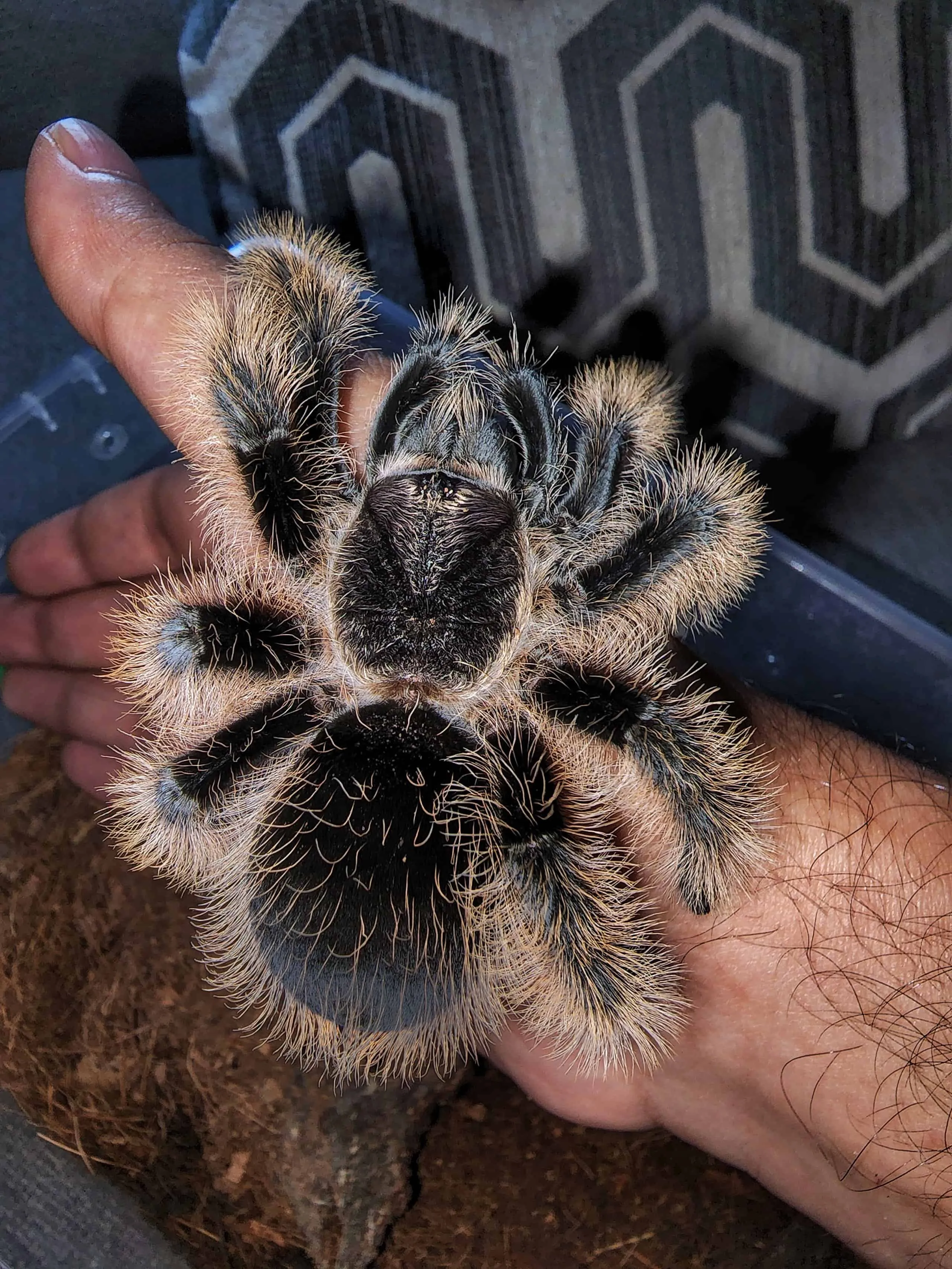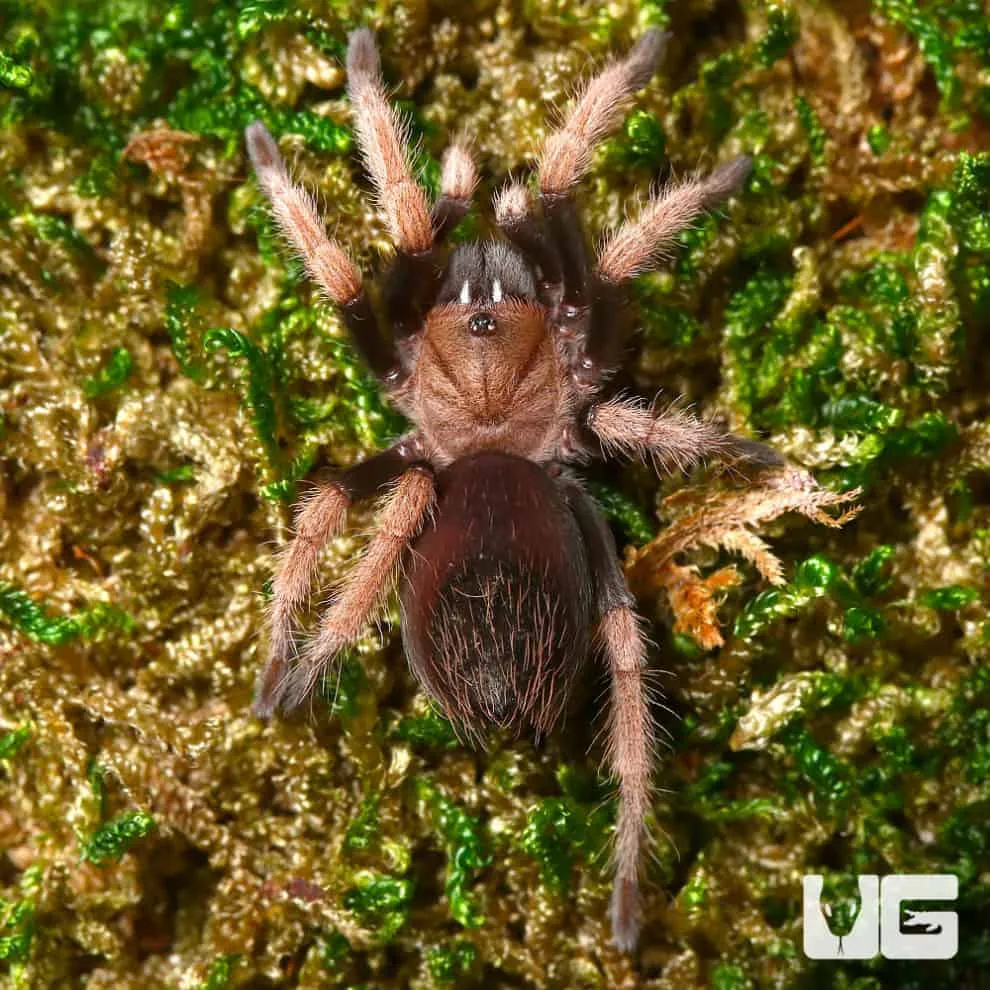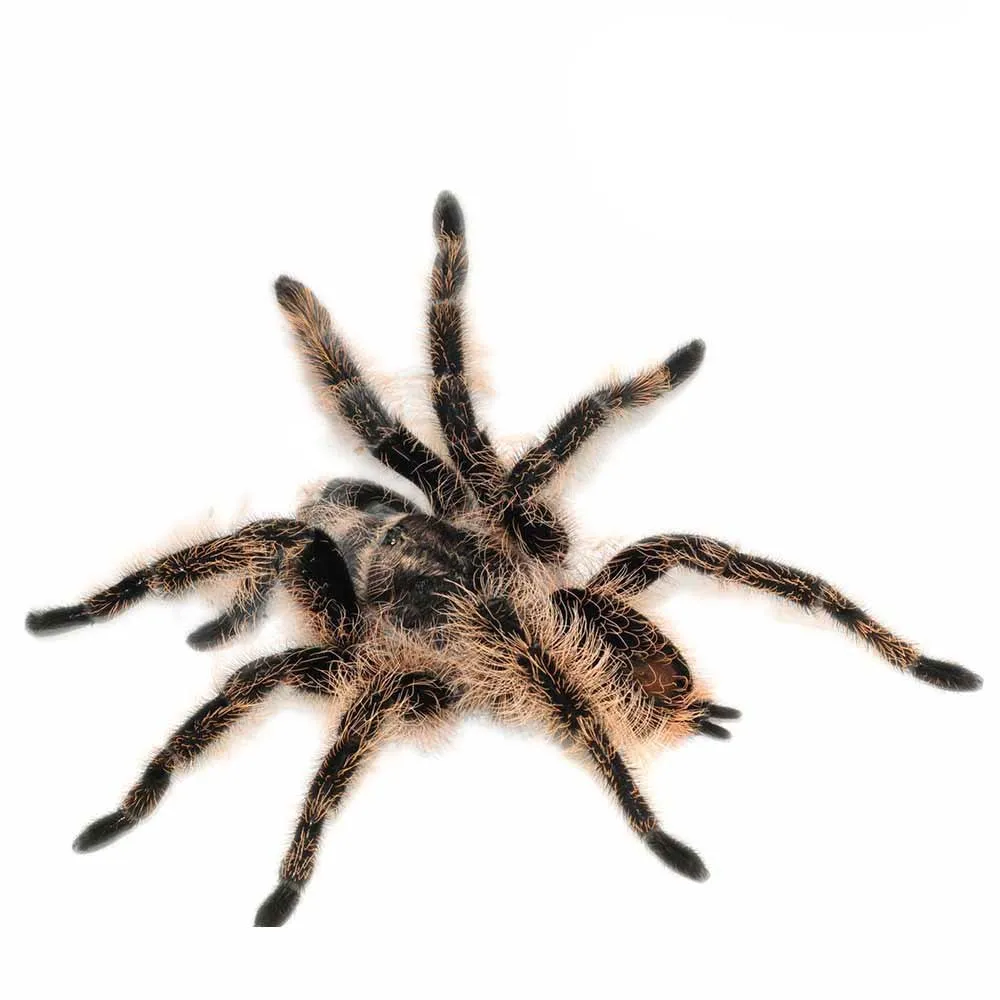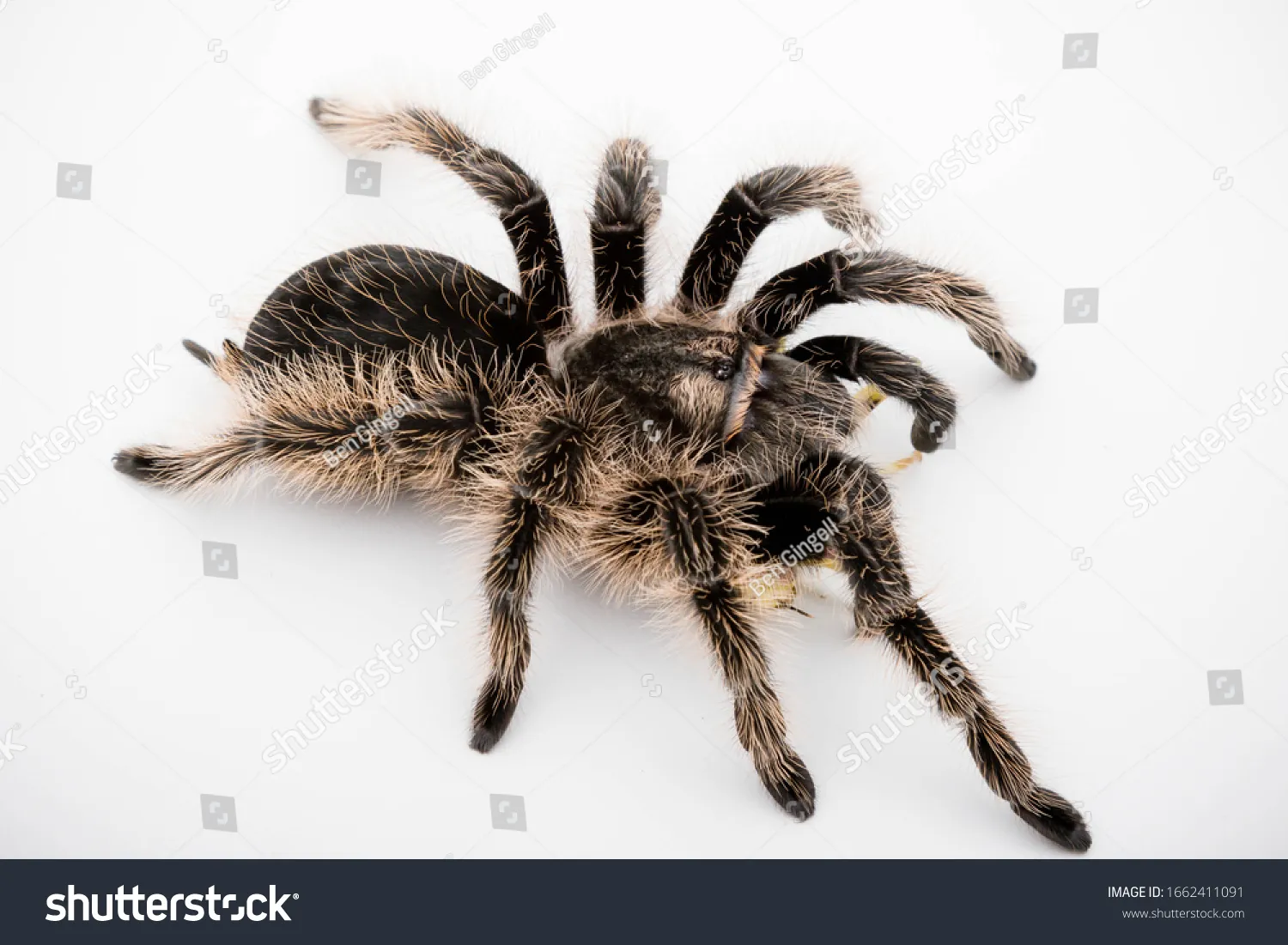The Red Curly Hair Tarantula (Tliltocatl albopilosus) is a popular pet due to its docile nature, striking appearance, and relatively easy care requirements. However, like any pet, they need specific care to thrive. This guide provides the top 5 essential care tips to ensure your Red Curly Hair Tarantula lives a long, healthy, and fulfilling life. By following these guidelines, you can enjoy the fascinating world of tarantula keeping while providing your pet with the best possible environment. Proper care is key to observing its beautiful characteristics and behaviors. Let’s dive into the essentials!
Choosing the Right Habitat
Selecting the right habitat is the first and arguably most important step in caring for your Red Curly Hair Tarantula. The enclosure should provide a safe, secure, and comfortable environment that mimics its natural habitat. The size, materials, and overall setup all contribute to the well-being of your tarantula. A poorly chosen habitat can lead to stress, health problems, and even premature death. Take your time, research different options, and ensure that your chosen enclosure provides the best possible home for your pet. Remember, a happy tarantula is a healthy tarantula, and the right habitat is the foundation of their happiness.
Tank Size and Setup
The size of the enclosure depends on the size of your tarantula. A good rule of thumb is to provide an enclosure that is at least three times the leg span of your tarantula in width. For a juvenile, a 5-10 gallon tank is usually sufficient. As it grows, you will need to upgrade to a larger enclosure, possibly a 10-20 gallon tank for an adult. The enclosure should have a secure lid to prevent escape. The height of the enclosure is less critical than the floor space, as Red Curly Hair Tarantulas are terrestrial. However, ensure there is enough height to accommodate the substrate and any decorations. Ventilation is also crucial. The enclosure should have adequate ventilation to prevent the buildup of mold and maintain air quality. Consider using a mesh or screen top, but ensure the holes are small enough to prevent escape.
Substrate and Hiding Spots

The substrate provides the foundation of the enclosure and is essential for the tarantula’s health and well-being. The best substrate for a Red Curly Hair Tarantula is a mix of peat moss, coconut fiber (eco earth), and a small amount of vermiculite or sphagnum moss. This mixture retains moisture well, allowing for proper humidity levels. The substrate should be at least 3-4 inches deep to allow the tarantula to burrow. Provide a variety of hiding spots. These tarantulas are opportunistic burrowers and will appreciate having a hide. Cork bark, half logs, or even commercially available tarantula hides are excellent choices. Place these hides strategically to provide secure areas where the tarantula can feel safe and retreat when stressed. Ensure the enclosure also has a shallow water dish with fresh, clean water at all times. Replace the water regularly to prevent contamination and ensure your tarantula always has access to hydration.
Maintaining Temperature and Humidity
Maintaining the correct temperature and humidity levels is vital for the health and well-being of your Red Curly Hair Tarantula. The ideal temperature range is between 75-85°F (24-29°C). Use a heat source, such as a heat mat placed on the side of the enclosure (never directly underneath), to maintain the temperature. Avoid using heat lamps, as they can dry out the enclosure too quickly. Humidity is critical for molting and overall health. The ideal humidity level for a Red Curly Hair Tarantula is between 65-75%. You can measure humidity with a hygrometer. Achieve this humidity level by misting the enclosure lightly with water a few times a week, depending on the ventilation and substrate. Avoid over-misting, which can lead to mold growth. Proper ventilation is essential to prevent the buildup of humidity and maintain air quality. Monitor the temperature and humidity regularly with a thermometer and hygrometer to ensure the environment is optimal.
Feeding Your Red Curly Hair Tarantula
Feeding is a crucial aspect of caring for your Red Curly Hair Tarantula. Providing the right food and ensuring your tarantula eats regularly will keep it healthy and active. They have specific dietary needs, and understanding these needs is important for their overall well-being. Overfeeding is also a risk, so it is important to find a balance. Observing their eating habits and adjusting the diet as they grow will give them the energy to thrive. Understanding their diet is key to providing a good life for your pet.
What to Feed and How Often

Red Curly Hair Tarantulas are insectivores, and their diet should consist primarily of insects. Suitable food items include crickets, mealworms, superworms, and roaches. The size of the prey should be appropriate for the size of the tarantula. As a general rule, the prey should be no larger than the tarantula’s body. Juveniles should be fed every 2-3 days, while adults can be fed every 5-7 days. Avoid overfeeding, as this can lead to obesity and health problems. Remove any uneaten prey within 24 hours to prevent stress to your tarantula and prevent the prey from bothering your spider. Gut-load the insects before feeding them to your tarantula. This involves feeding the insects nutritious food, such as fruits and vegetables, a few hours before feeding them to your tarantula. This practice ensures your tarantula receives a balanced diet.
Water and Hydration
Water is essential for your Red Curly Hair Tarantula’s survival. Always provide a shallow water dish with fresh, clean water. Ensure the water dish is shallow enough to prevent drowning. Replace the water regularly, at least every other day, to prevent contamination. You can also mist the enclosure lightly with water a few times a week, especially during molting, to maintain humidity and provide additional hydration. Observe your tarantula’s behavior to ensure it is drinking water. If it appears dehydrated (shriveled abdomen), increase the frequency of watering or misting.
Handling and Safety Precautions
While Red Curly Hair Tarantulas are generally docile, handling them should be approached with caution. They can bite if they feel threatened. Their bite is typically not life-threatening to humans, but it can be painful. Avoid handling your tarantula unnecessarily, especially when it is about to molt or has just molted. Always handle them close to the ground or a soft surface, in case they fall. Wash your hands thoroughly before and after handling your tarantula to prevent the spread of bacteria. Be calm and deliberate in your movements. Tarantulas can sense vibrations, so sudden movements can startle them. If your tarantula does bite, remain calm and clean the bite area thoroughly with soap and water. Watch for any signs of allergic reaction and seek medical attention if necessary. Remember that handling is more for your benefit than the tarantula’s. Most tarantulas prefer to be left alone.
Understanding Molting

Molting is a natural process where tarantulas shed their exoskeleton to grow. The frequency of molting depends on the tarantula’s age and growth rate. Juveniles molt more frequently than adults. Before molting, your tarantula may exhibit several behaviors. It might stop eating, become lethargic, and its abdomen may appear dark. It will often create a web mat. Do not disturb your tarantula during this time. Provide adequate humidity to help with the molting process. The molting process can take several hours or even days. After molting, your tarantula’s fangs will be soft and vulnerable, so it’s best to wait a few days before feeding it. Provide a secure, undisturbed environment during molting. Avoid handling your tarantula during and immediately after molting, as it is especially vulnerable. Provide the right environment for molting.
Recognizing Signs of a Healthy Tarantula
A healthy Red Curly Hair Tarantula will exhibit several key signs. It should be active and alert, exploring its enclosure and responding to stimuli. It should have a plump abdomen, indicating it is well-fed. It should be eating regularly and exhibiting a good appetite. The colors should be vibrant and not dull. The tarantula should be molting regularly. The tarantula should not be showing any signs of illness, such as lethargy, loss of appetite, or unusual behaviors. Check your tarantula for signs of parasites or mites. Keep the enclosure clean and ensure that the tarantula has access to fresh water. By observing your tarantula regularly, you can quickly identify any potential problems and take corrective measures to maintain its health and well-being. It’s all about careful observation and attention.
Troubleshooting Common Problems
Even with the best care, Red Curly Hair Tarantulas can sometimes experience problems. Knowing how to identify and address common issues is an essential part of tarantula keeping. One of the most common issues is dehydration, which can be caused by insufficient water or low humidity. Ensure your tarantula has access to fresh water and the humidity level is appropriate. Another common problem is loss of appetite, which can be caused by a variety of factors, including stress, illness, or approaching molting. Observe your tarantula carefully and consult a veterinarian if the problem persists. Parasites and mites can also affect your tarantula’s health. Inspect your tarantula regularly and consult a veterinarian if you notice any signs of infestation. In extreme cases, tarantulas may experience a condition known as ‘premature molting’. This is when the tarantula tries to molt before it is ready and often results in a failed molt. Ensure the tarantula is in a suitable environment, and do not disturb the tarantula. By being proactive and observant, you can prevent and address many of these common issues, ensuring your tarantula’s health and longevity. Consulting with an expert is also an option.
Caring for a Red Curly Hair Tarantula is a rewarding experience. By following these top 5 care tips, you can provide your pet with the best possible environment to thrive. Remember to research, observe, and adapt your care practices based on your tarantula’s individual needs. With the right care, your Red Curly Hair Tarantula can become a fascinating and long-lived member of your family. Enjoy the journey of tarantula keeping and the unique beauty of these amazing creatures!
